Earlier this week we celebrated Penguin Awareness Day which takes place every year on the 20th January. Not to be confused with World Penguin Day, which of course takes place on the 25th of April.
Penguins are so amazing that they get two days to acknowledge their awesomeness! It isn’t always easy to see Penguins in their natural environment because they usually live in remote places. Yet penguins are adored by many people, perhaps because they feature in so many children’s books and films. Not many people realise that Penguin numbers around the globe are declining at an alarming rate. Penguin Awareness Day is intended to shed some light on the plight of these astonishing flightless birds.
Humboldt Penguins at Wingham Wildlife Park
Later in this blog I’ll be looking at the Penguin Species of the world, but for now I’d like to talk a little about our Penguins here at the Park. We have a group of 14 Humboldt Penguins (plus any young that they may have had that season). To celebrate Penguin Awareness Day, I’d love to share with you some of my favourite facts about the Penguins at WWP.
Most people are familiar with the fact that Penguins can live in the harsh conditions of the South Pole. But many don’t realise that we have so many different species of Penguin and that actually they come from warmer climates too. People are usually shocked to hear that Humboldt Penguins breed on the edge of the Atacama Desert in Peru and Chile… and even more shocked to hear that they build their nest out of their own poop.

One of my favourite times of year is when our penguins go through their annual moult. If you would like to learn more about the lifecycle of Humboldt Penguins and their unusual breeding habits, see my previous blog HERE.

This is going to sound mad, but I love Penguin’s tongues! They look like something an otherworldly creature should have. Their tongue and the roof of their mouth are covered with lots of spikes which are used to help grip their slippery prey. You can just about make this out on the adorable Penguin chick photo below. Next time you hear the Penguin’s display songs have a look into their mouths to see this intriguing feature!

Interestingly, we can’t tell the gender of our Penguins just by looking at them. We have to send a feather sample off for DNA testing. Baby penguins are also fully grown when they leave the nest at 3 months old. We can tell the difference between the juveniles and the adults because they are a different colour. Juveniles have an all grey head, whereas adults have white eye stripes.

I’m also quite jealous of bird’s vision! Did you know that most birds can see in Ultraviolet light? (Find out more about bird’s vision in my previous blog HERE). But Penguin eyes are even more incredible. Have you ever tried to open your eyes underwater in the swimming pool? Everything gets a bit blurry and that is because our eyes can’t account for the refraction of light as it passes through water. Penguins however can change the shape of the lens in their eye to account for this, meaning they have excellent vision above and below the water.
Penguins can jump clean out of the water just like a dolphin! This behaviour is called “Porpoising” and Penguins do this when they want to travel FAST. By doing this Penguins can also take a breath mid air rather than having to stop for a breather. Our group do this most mornings when we are cleaning their exhibit. Have you seen them doing this?

Many visitors to the park completely miss our underwater viewing window! This is one of the best ways to see our Penguins, and they absolutely adore interacting with you guys down there! We often take toys and other enrichment items down here for the Penguins to play with.

Did you know that we take the Penguins for a stroll around the Park every morning? This is excellent enrichment for our little Colony, and I have to mention Kizzy who always tries to bring the biggest stick back to his nest. We can’t put an exact time on this (and can’t guarantee that the Penguins will want to go on a walk everyday) but around 10:15am the Penguins are let loose around the grassy area next to their enclosure. You can also feed the penguins and even take them on their walk if they’re up for it that day. See our Penguin Experience HERE.
Penguins in the wild
Penguins are inspiring. We often find them cute, but they’re actually very hardy, living in very challenging environments. Interestingly only four out of the 18 species of penguin actually breed in Antarctica, and the majority of the world’s Penguins are also at risk of extinction. I’ve included below a brief summary of the penguins around the globe and their classification on the IUCN red list.
Only four species of Penguin actually breed in Antarctica.
Emperor Penguins (Aptenodytes forsteri).
Probably the most well-known Penguins on Earth gaining fame from a multitude of documentaries and literature throughout history. They are the largest species of Penguin and the only Penguins capable of breeding during the Antarctic winter enduring temperatures as low as -60°C! Listed as NEAR THREATENED it is unknown exactly how many individuals there are. In 2012 it was thought that there were 595,000 but there have been seven colonies discovered since then. These deep divers are the best Penguins at holding their breath for up to 18 minutes, usually finding food 100-200m down.
Climate change is the main issue for these Penguins and now these areas are becoming more accessible they are at risk from human disturbance.
Chinstrap Penguins (Pygoscelis antarcticus).
One of the five species recognised as LEAST CONCERN with 8,000,000 in the wild, but these penguins are still in decline. Easily recognised by the narrow black band under their head, Chinstraps are found in Chile, the Falkland Islands, French Southern Territories, Antarctica, Bouvet Island, South Georgia, South Sandwich Islands, Argentina, Australia, Heard Island and McDonald Islands, New Zealand, Saint Helena, Ascension and Tristan da Cunha and South Africa.
Under threat from: Fishing, climate change and volcanic activity.
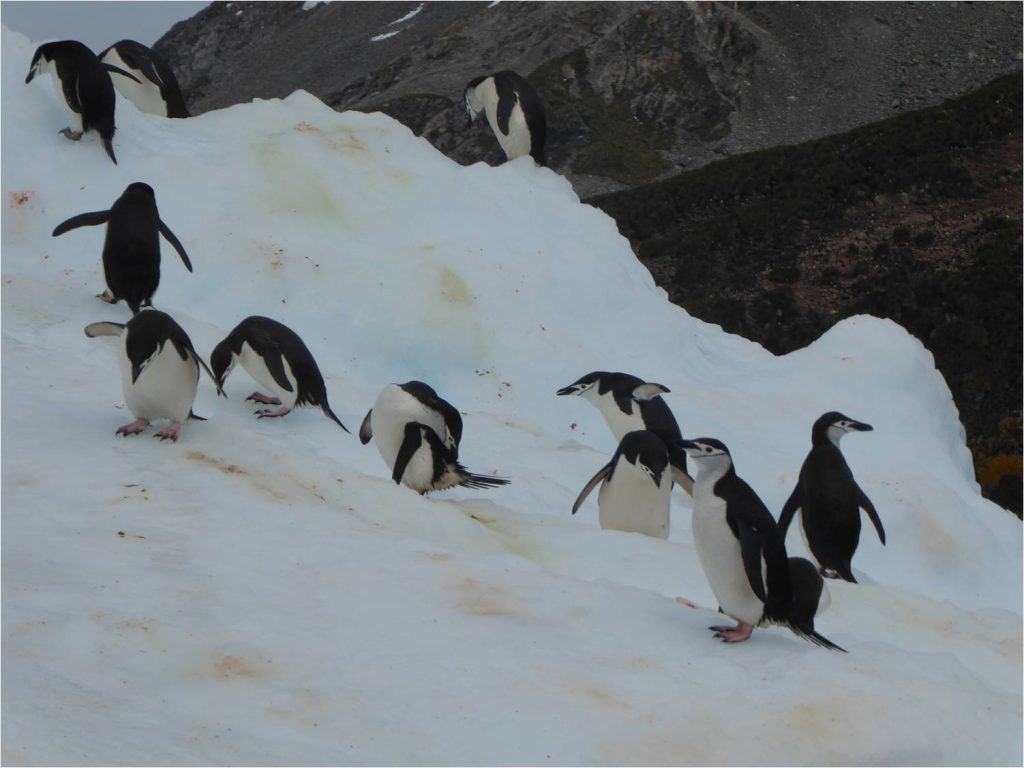
Photo Credit: Ian Hunter
Gentoo Penguins (Pygoscelis papua).
The third largest penguins, Gentoos are also categorised as LEAST CONCERN with a stable population at the moment of 774,000. Adorably they are famous for collecting nesting material, in particular their selection of pebbles. They have a large range from Antarctica, Australia, the Falkland Islands, French Southern Territories, Heard Island and McDonald Islands, South Africa, South Georgia, South Sandwich Islands, Argentina, Chile, New Zealand, Saint Helena, Ascension and Tristan da Cuna and Bouvet Island.
Problems: Hunting and trapping, fishing, human disturbance, invasive species and pollution.
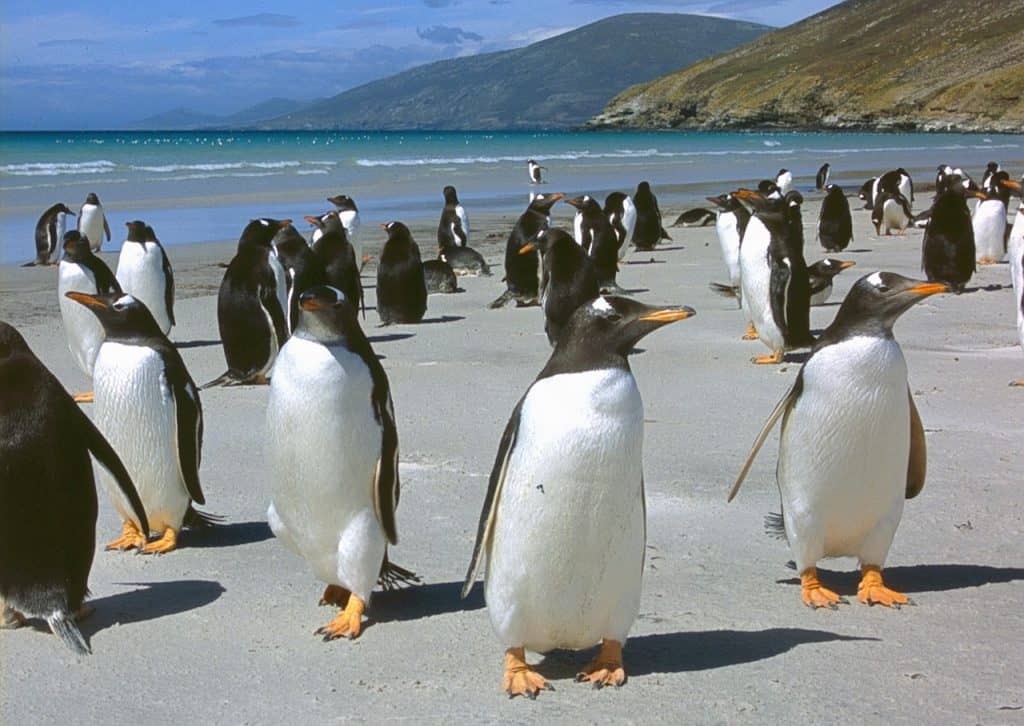
Photo Credit: John Buckingham
Adélie Penguins (Pygoscelis adeliae).
Found along the entire coast of the Antarctic continent and the second of only two Penguin species on the increase being the most widely spread of all of the Penguins. Classed as LEAST CONCERN there are thought to be 7,580,000 living in Antarctica, South Georgia, South Sandwich Islands, Argentina, Australia, Falkland Islands, French Southern Territories, Heard Island and McDonald Islands and New Zealand. Human disturbance, overfishing and pollution are all problems for these Penguins and of course Climate Change is also an issue.
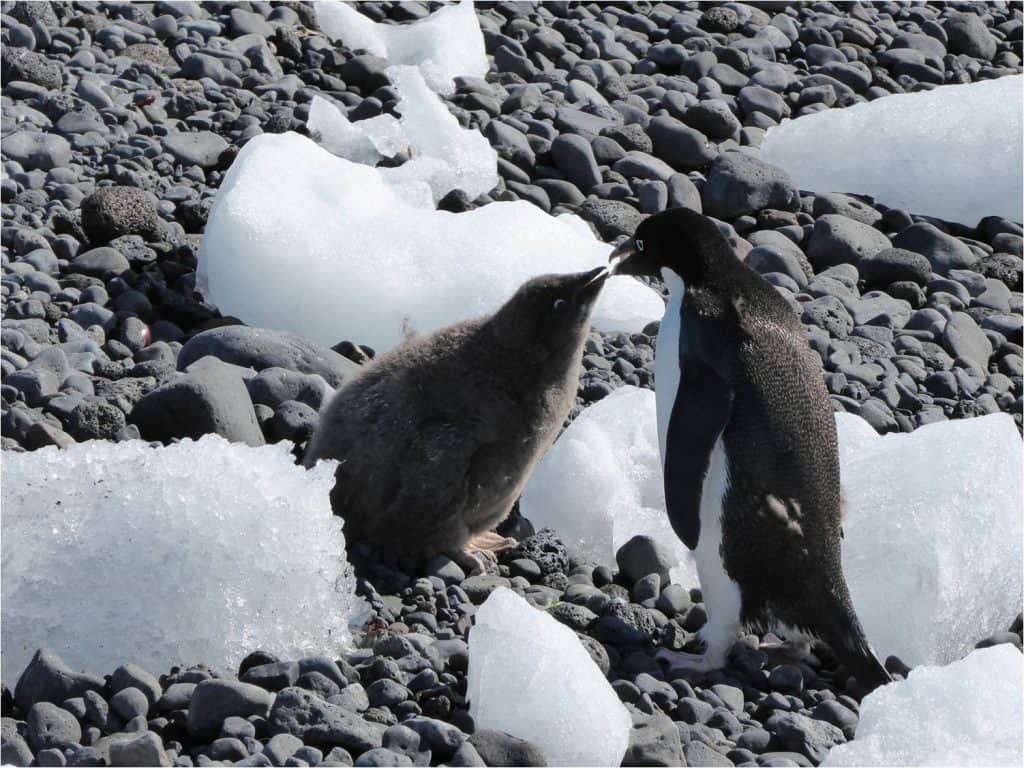
Photo Credit: Ian Hunter
Three species of Penguin only nest in the Americas and Nowhere Else.
Humboldt Penguins (Spheniscus humboldti).
Featured earlier on in my blog, we are very familiar with this species at the Park. Humboldts come from Northern Chile and Peru. They are classed as VULNERABLE to extinction with less than 32,000 left in the wild and have a comprehensive list of threats: overfishing, habitat loss and exploitation, invasive species, pollution and climate change. All of which make it difficult for Humboldt Penguin numbers to recover.
Magellanic Penguins (Spheniscus magellanicus).
Similar in appearance to the Humboldts, Magellanic Penguins come from Southern Chile, Argentina, Brazil, Uruguay, Peru & the Falkland Islands. They status is NEAR THREATENED and we don’t know how many are left in the wild or how quickly their numbers are declining.
Threats: climate change, fire, pollution, entanglement in fishing nests, hunting and trapping, invasive species, human disturbance and drilling for oil.
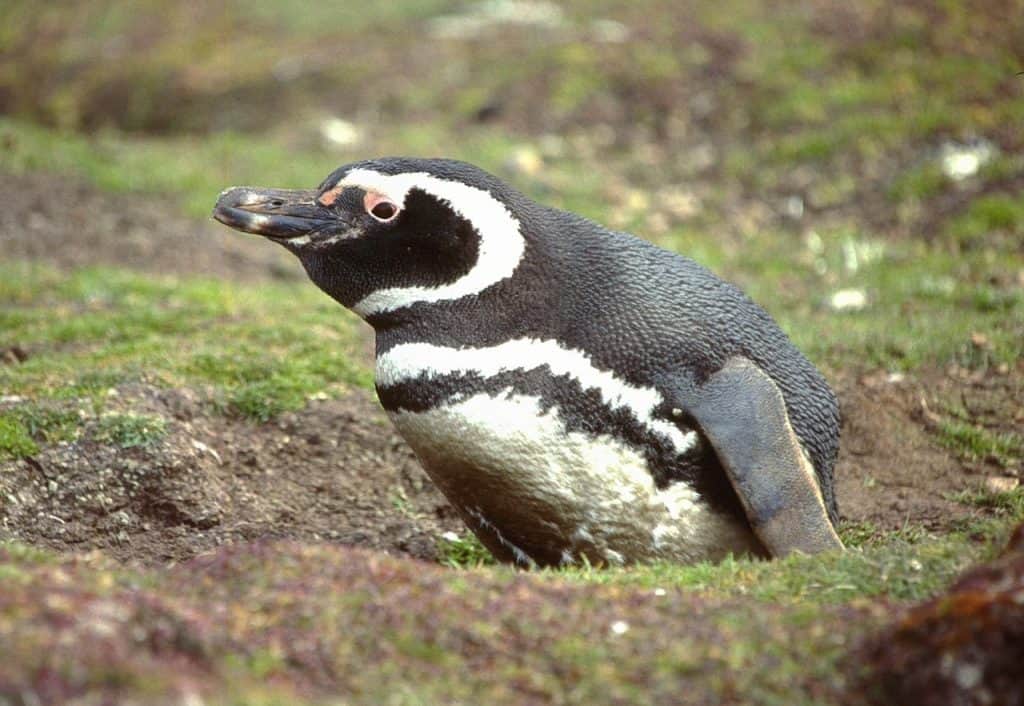
Photo Credit: John Buckingham
Galapagos Penguins (Spheniscus mendiculus).
Only found in the Galapagos islands, these penguins are the rarest in the world, and technically the only Penguins to be found in the Northern Hemisphere. Thought to be just 1,200 left in the wild they are classified as ENDANGERED. Climate change is the main problem for these birds which are affected by storms, and ocean temperatures determine where their prey items reside. If sea temperatures rise much further, tragically it could be the downfall for this species.
Other threats: shipping lanes, hunting and trapping, overfishing, human disturbance, invasive species and pollution.

Photo Credit: Charles J Sharp
Four species nest across the Southern Ocean Islands.
King Penguins (Aptenodytes patagonicus).

The second largest Penguin species and one of only two species of Penguin that are actually on the increase and as such classed as LEAST CONCERN, it is unknown how many there are globally. They can be found in Argentina, Chile, the Falkland Islands, French Southern Territories, Heard Island and McDonald Islands, South Georgia, South Sandwich Islands, South Africa, Antarctica, Australia, Bouvet Island, New Zealand, Saint Helena, Ascension and Tristan da Cunha, Brazil and (finally!) Uruguay. King Penguins are being affected by climate change and invasive species.

Northern Rockhopper Penguins (Eudyptes moseleyi).
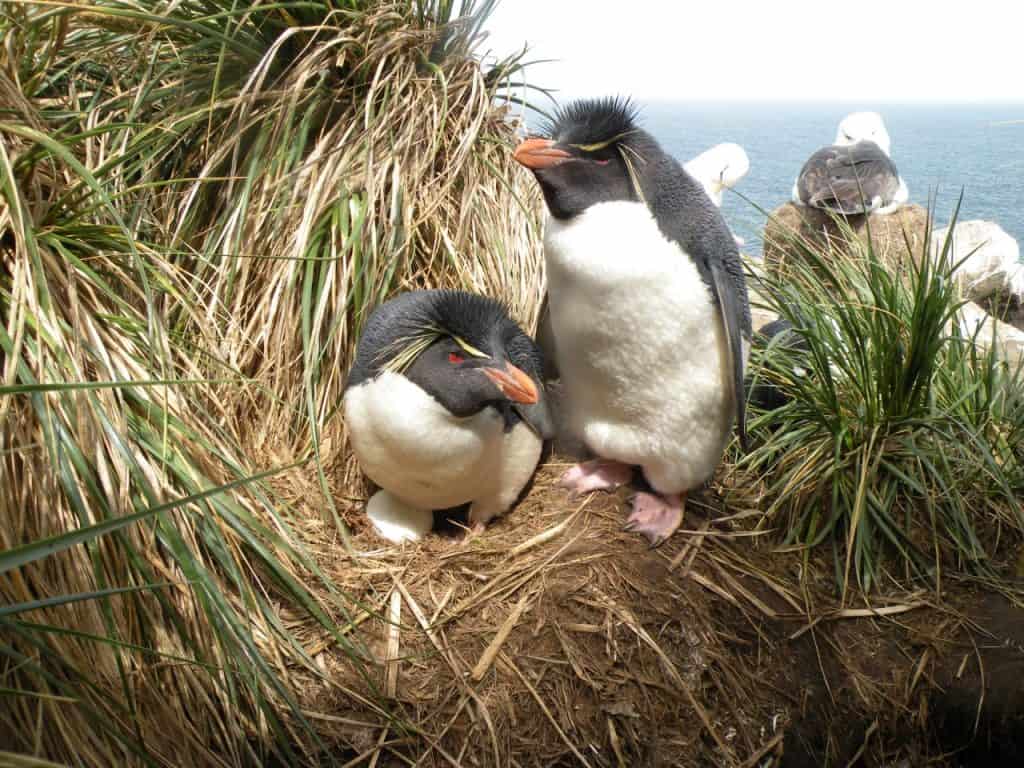
The first of six species of crested Penguins it was recently determined to be a distinct species from the Southern Rockhoppers, studies have shown that their populations have declined by 90% since the 1950s with 480,600 remaining today. Found in the French Southern Territories, Saint Helena, Tristan da Cunha, South Africa and the Falkland Islands, they are classed as ENDANGERED. Hugely affected by invasive species other threats include: hunting and trapping, overfishing, pollution and climate change.
Southern Rockhopper Penguins (Eudyptes chrysocome).
Breeding in Argentina, Australia, Chile, Falkland Islands, French Southern Teritories, Heard Island and McDonald Islands, New Zealand and South Africa, Southern Rockhoppers are classed as VULNERABLE with 2,500,000 in the wild.
At risk from: hunting and trapping, human disturbance, invasive species, pollution and climate change.
Macaroni Penguins (Eudyptes chrysolophus).
It is unclear how many are left in the wild and are classed as VULNERABLE to extinction. They have a large range from Antarctica, Bouvet Island, Chile, Falkland Islands, French Southern Territories, Heard Island and McDonald Islands, South Africa, South Georgia, South Sandwich Islands, Brazil, Australia, New Zealand, Saint Helena, Ascension and Tristan da Chuna.
Problems include overfishing, invasive species and climate change.
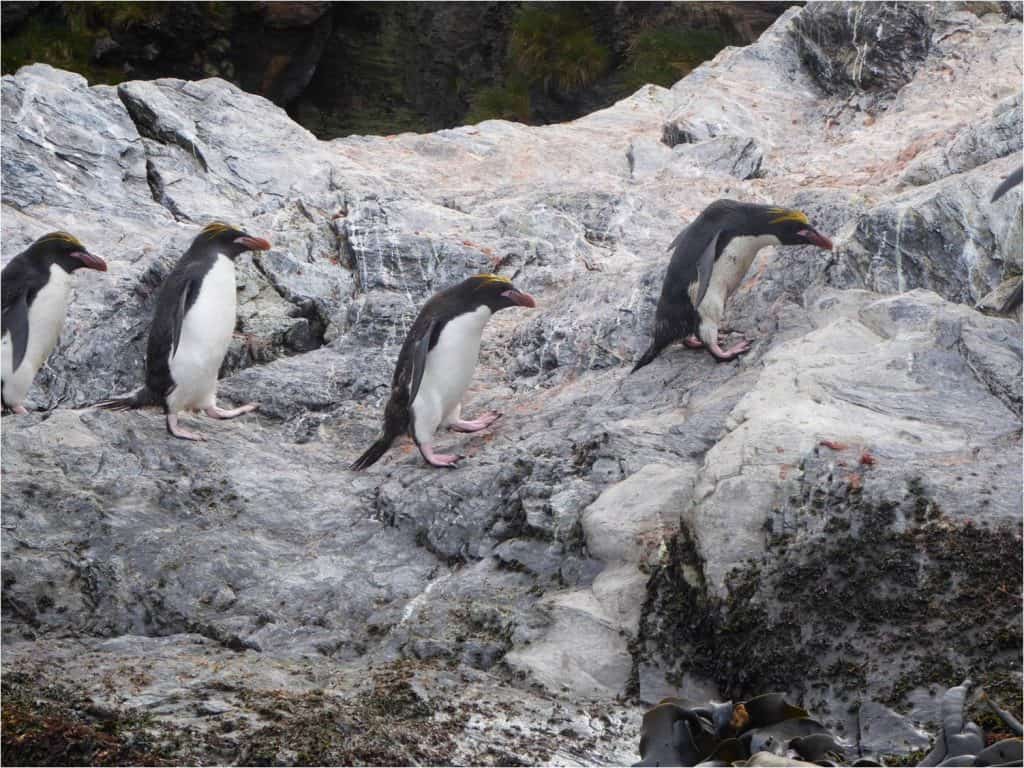
Photo Credit: Ian Hunter
Only one species of Penguin comes from Africa and nowhere else.
African Penguins (Spheniscus demersus).
Also known as the Jackass Penguin they can be found in South Africa, Namibia, the Congo, Gabon, Angola and Mozambique. They are one of four species of Banded Penguins and there are less than 50,000 left. Classification: ENDANGERED. List of threats are extensive with oil and gas drilling, hunting and trapping, overfishing, human disturbance, invasive species, pollution and climate change.
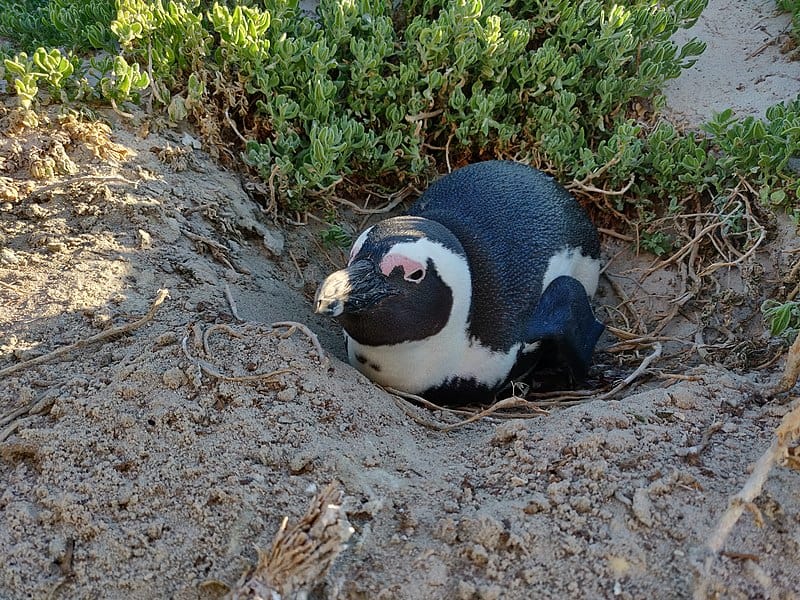
Photo Credit: Bl1zz4rd-editor
New Zealand and Australia have another six species of Penguin.
Little Penguins (Eudyptula minor).
The smallest species of Penguin in the world at just 33cm tall, they are also called Fairy Penguins. Living in Australia and New Zealand their population is stable at around 469,760 and listed as LEAST CONCERN. Whilst they have an extreme list of threats they seem to adapt to urbanisation quite well.
Threats: Human development, aquaculture, oil and gas mining, roads, overfishing, human disturbance, fire, invasive species, pollution and climate change.
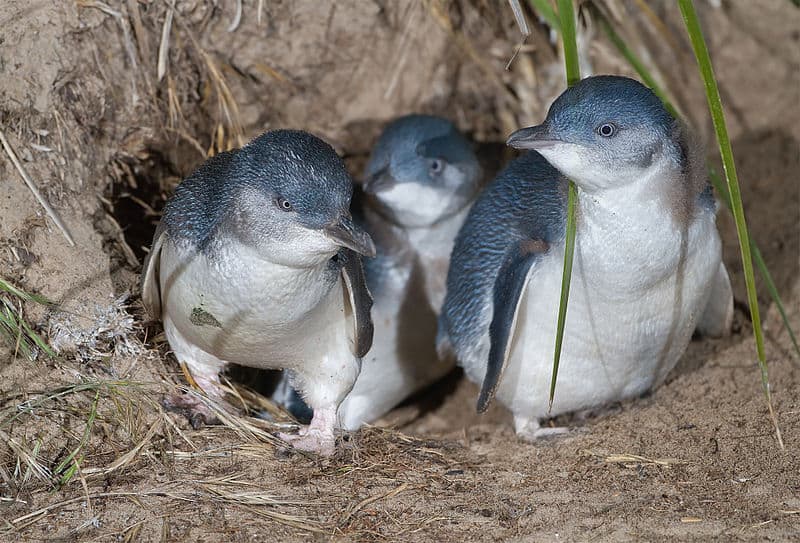
Photo credit: JJ Harrison
Fiordland Penguins (Eudyptes pachyrhynchus).
A forest dwelling Penguin! Endemic to New Zealand, as in found nowhere else on Earth, it is thought that there are between 2,500 and 9,999 individuals in the wild. Classed as VULNERABLE their threats include: roads, overfishing, human disturbance, invasive species, pollution and climate change.
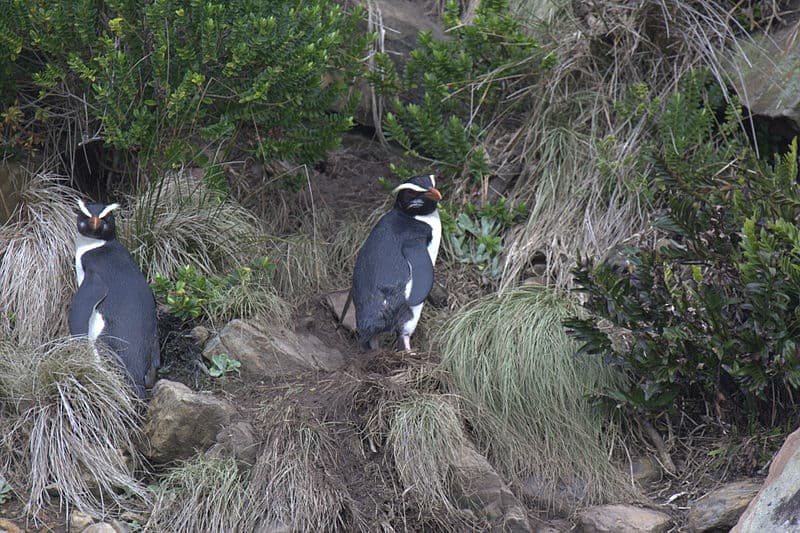
Photo Credit: travelwayoflife
Royal Penguins (Eudyptes schlegeli).
At around 28 inches tall, Royal Penguins are one of the tallest members of the Eudyptes genus of Penguins. Closely related to Macaroni Penguins, they are classed as NEAR THREATENED and under threat from overfishing, human disturbance, invasive species, pollution and climate change. They breed in Australia but are also found in Argentina, Falklands, South Georgia and the South Islands.
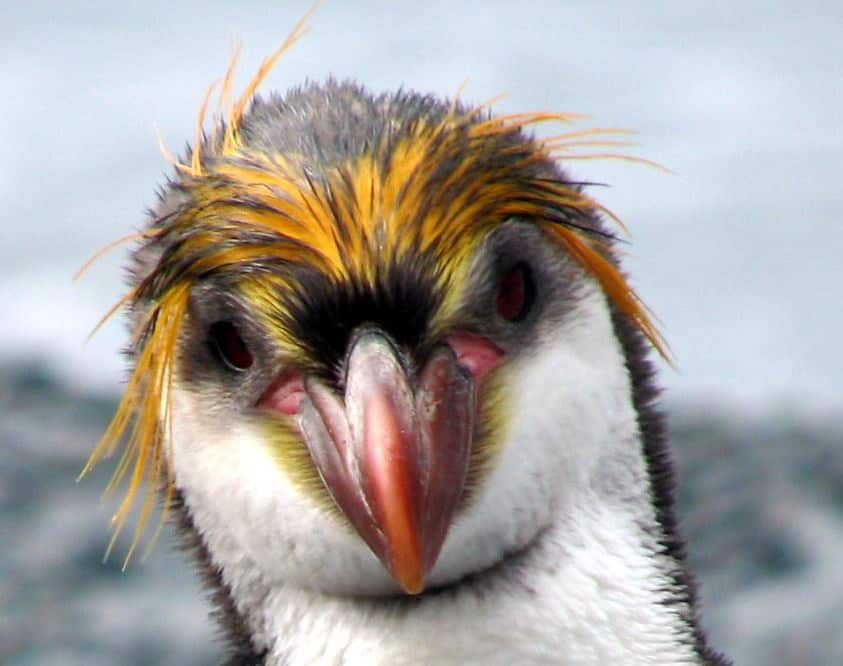
Photo Credit: Lin Padgham
Snares Penguins (Eudyptes robustus).
These Penguins have a tiny range, only breeding on the Snares Islands in New Zealand. This makes them very susceptible to dramatic events which could push their status to Endangered or worse in the future. Currently classed as VULNERABLE the population seems to be stable at around 63,000 individuals. Threats include: overfishing, invasive species, pollution and climate change.
Yellow-eyed Penguins (Megadyptes antipodes).
Another New Zealand endemic, they may be one of the most ancient of all penguin species. Thought to be closely related to the Little Penguin but now DNA studies have shown it is more closely related to the Eudyptes Penguins. With a population of just 2,528- 3,480 they are listed as ENDANGERED on the IUCN. A shrubland and forest dwelling species they have a multitude of threats including: farming, oil and gas drilling, logging, overfishing, human disturbance, fire, invasive species and climate change.
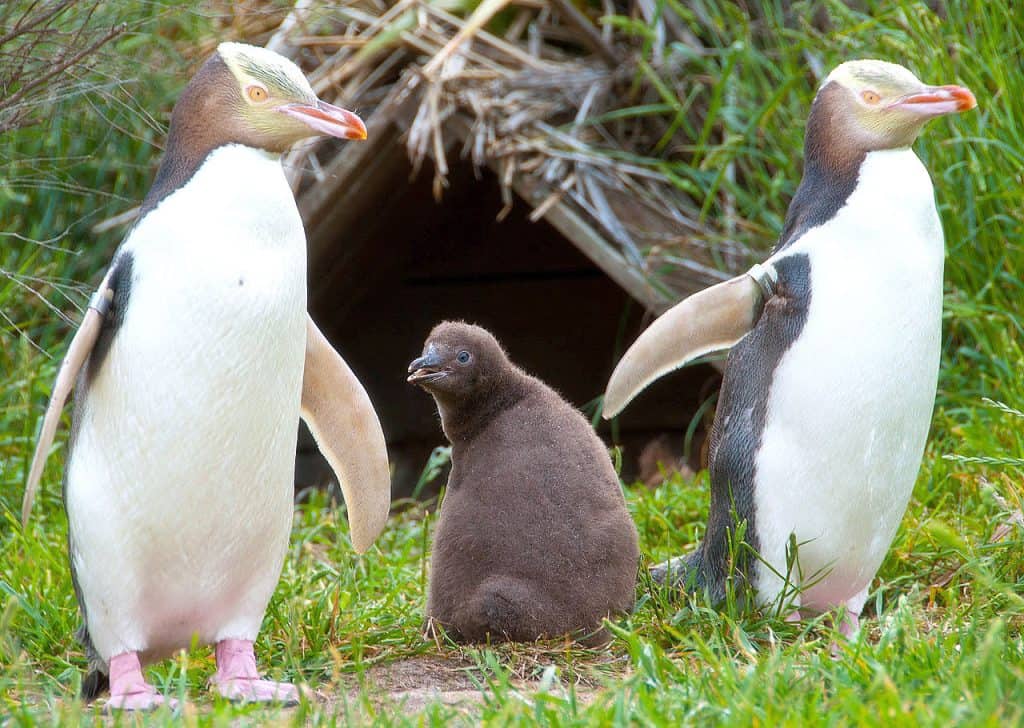
Photo Credit: Steve from Bangkok, Thailand
Erect-crested Penguins.
Another ENDANGERED New Zealand breeder with 150,000 left in the wild. They also reside in Antarctica, Argentina, Australia and the Falkland Islands. Very little is known about this species and more research is needed, but we do know that they are declining rapidly.
Heavily affected by two threats: overfishing and climate change.
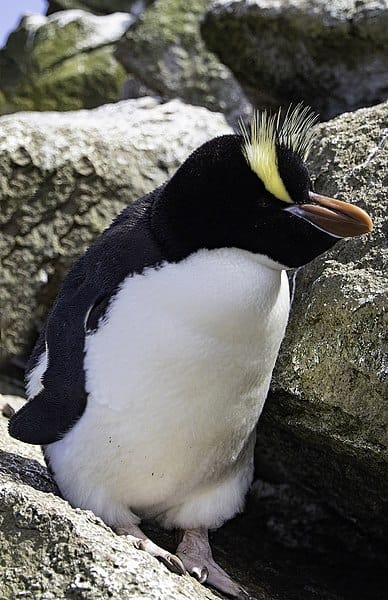
Photo Credit: C00ch
How you can celebrate Penguin Awareness Day.
To conclude Penguins as a whole desperately need our help to thrive and a change in our ways is well overdue. We can all do our bit to help penguins! Simple ways in which your choice could directly help the state of our oceans include our choice in fish to eat and the way our food is packaged. By only purchasing fish on the “Good Fish List” with the certified MSC label you know you aren’t adding to the problem of overfishing.
Demanding supermarkets to stop using single use plastic is another way we can help reduce pollution to the penguin’s environment. Did you know that plastic packaging is now being found in the ice at the extremes of our planet? Always choose produce that is not wrapped in plastic, or better yet bring your own refillable containers to the counter.
Be conscious of Climate Change! We can all do our bit to make a difference to our energy and carbon consumption. There are lots of easy ways we can do this from switching the lights off (and switching to a green-energy provider!), to recycling and choosing what we eat and how we get to work.
And finally, really celebrate Penguin Awareness day by learning more about these beautiful birds and try to understand how people are affecting them. If you haven’t celebrated Penguin Awareness day yet why not come and visit the penguins here at WWP? I can highly recommend their daily feeding talks at 1PM and 3PM. We are always happy to chat Penguin with you and answer all of your penguin questions.
A big thank you to my friends Ian and John from Sandwich Bay Bird Observatory for letting me use some of their amazing pictures of wild Penguins from their travels in my blog this week.


